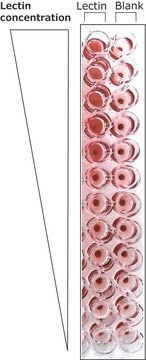MABF735
Anti-KLRG1 Antibody (mouse), FITC, clone 2F1
clone 2F1, 0.5 mg/mL, from hamster(Syrian)
Sinónimos:
Killer cell lectin-like receptor subfamily G member 1, Mast cell function-associated antigen 2F1
About This Item
Productos recomendados
origen biológico
hamster (Syrian)
Nivel de calidad
conjugado
FITC conjugate
forma del anticuerpo
purified antibody
tipo de anticuerpo
primary antibodies
clon
2F1, monoclonal
reactividad de especies
mouse
envase
antibody small pack of 25 μg
concentración
0.5 mg/mL
técnicas
flow cytometry: suitable
immunoprecipitation (IP): suitable
isotipo
IgG
Nº de acceso UniProt
Condiciones de envío
wet ice
modificación del objetivo postraduccional
unmodified
Información sobre el gen
mouse ... Klrg1(50928)
Categorías relacionadas
Descripción general
Inmunógeno
Aplicación
Inflammation & Immunology
Calidad
Flow Cytometry Analysis: 0.5 µg of this antibody detected KLRG1 in one million C57Bl/6 splenocytes.
Forma física
Almacenamiento y estabilidad
Cláusula de descargo de responsabilidad
¿No encuentra el producto adecuado?
Pruebe nuestro Herramienta de selección de productos.
Código de clase de almacenamiento
12 - Non Combustible Liquids
Clase de riesgo para el agua (WGK)
nwg
Certificados de análisis (COA)
Busque Certificados de análisis (COA) introduciendo el número de lote del producto. Los números de lote se encuentran en la etiqueta del producto después de las palabras «Lot» o «Batch»
¿Ya tiene este producto?
Encuentre la documentación para los productos que ha comprado recientemente en la Biblioteca de documentos.
Nuestro equipo de científicos tiene experiencia en todas las áreas de investigación: Ciencias de la vida, Ciencia de los materiales, Síntesis química, Cromatografía, Analítica y muchas otras.
Póngase en contacto con el Servicio técnico







